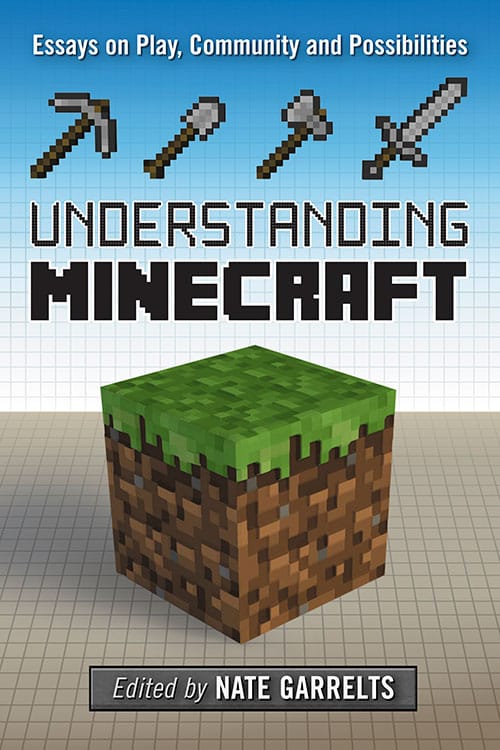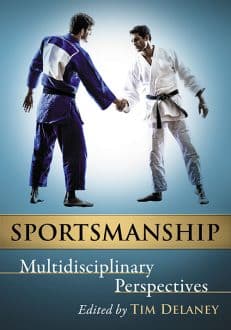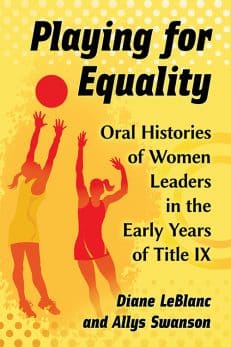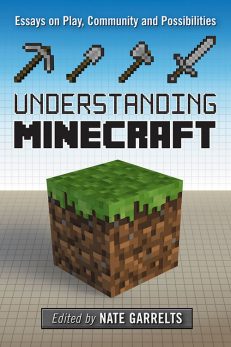Understanding Minecraft
Essays on Play, Community and Possibilities
$19.99
In stock
About the Book
Since its official release in 2011, Minecraft has sold over 48 million copies across all gaming platforms. The premise of Minecraft is simple: destroy, collect, build and interact in a world made entirely of colored cubes. Unlike Lego blocks or other construction toys, Minecraft’s digital play space allows for virtually limitless creation without the cost and limitations of physical building materials. Developer Mojang’s generous policies toward modification and other uses of their intellectual property also engender enthusiasm and creativity from fans who make music, art and animation inspired by the software. The first essays in this collection cover Minecraft’s origins, describing its relationship to other video games and toys and examining the learning models implicit in its design. Later essays describe and theorize the various ways players interact with the software, which simultaneously presents them with structural constraints and limitless possibilities. Instructors considering this book for use in a course may request an examination copy here.
NOT OFFICIAL MINECRAFT PRODUCT. NOT APPROVED BY OR ASSOCIATED WITH MOJANG.
About the Author(s)
Bibliographic Details
Edited by Nate Garrelts
Format: softcover (6 x 9)
Pages: 232
Bibliographic Info: 24 photos, notes, bibliographies, index
Copyright Date: 2014
pISBN: 978-0-7864-7974-0
eISBN: 978-1-4766-1815-9
Imprint: McFarland
Table of Contents
Introduction: Why Minecraft Matters (Nate Garrelts) 1
The Videogame Commons Remakes the Transnational Studio (Dennis Redmond) 7
Players, Modders and Hackers (Peter Christiansen) 23
Teaching Tools: Progressive Pedagogy and the History of Construction Play (Colin Fanning and Rebecca Mir) 38
Mining Constructivism in the University: The Case of Creative Mode (Jeffrey E. Brand, Penny de Byl, Scott J. Knight and James Hooper) 57
The Craft of Data Mining: Minecraft and the Constraints of Play (Alexandra Jean Tremblay, Jeremy Colangelo and Joseph Alexander Brown) 76
Just Steve: Conventions of Gender on the Virtual Frontier (Iris Rochelle Bull) 88
(Queer) Algorithmic Ecology: The Great Opening Up of Nature to All Mobs (Amanda Phillips) 106
Look What Just Happened: Communicating Play in Online Communities (Michael Thomét) 121
A Craft to Call Mine: Creative Appropriation of Minecraft in YouTube Animations (Jandy Gu) 132
“Someone off the YouTubez”: The Yogscast as Fan Producers (Esther MacCallum-Stewart) 148
Videogames in the White Cube (Michael St. Clair) 160
Fine Arts, Culture and Creativity in Minecraft (James Morgan and R. Yagiz Mungan) 175
Building a Case for the Authenticity vs. Validity Model of Videogame Design (Adam L. Brackin) 191
Where Game, Play and Art Collide (Rémi Cayatte) 203
About the Contributors 215
Index 219
Book Reviews & Awards
A Library Journal Starred Review
“An engrossing and thorough read…exhaustively researched and thoroughly cited…the reading is lively and active with an approachable tone and style”—Library Journal.





